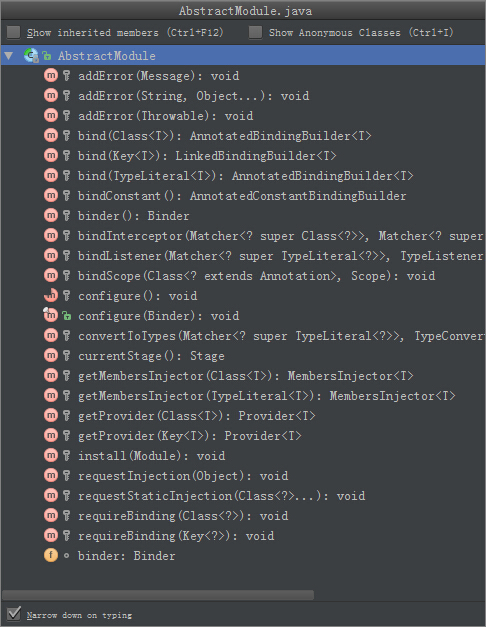Guice module研究
更新日期:
文章目录
模块化的配置信息,显然是基于接口的绑定。使用Injector实例
A module contributes configuration information, typically interface
bindings, which will be used to create an {@link Injector}. A Guice-based
application is ultimately composed of little more than a set of
{@code Module}s and some bootstrapping code.
<p>Your Module classes can use a more streamlined syntax by extending
{@link AbstractModule} rather than implementing this interface directly.
<p>In addition to the bindings configured via {@link #configure}, bindings
will be created for all methods annotated with {@literal @}{@link Provides}.
Use scope and binding annotations on these methods to configure the
bindings.
类结构:

